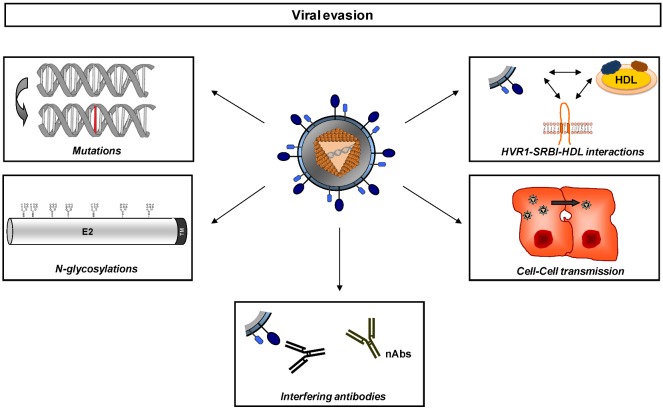Figure 1.
Strategies of viral evasion during Hepatitis C virus (HCV) infection. HCV has adapted multiple mechanisms to escape host immunity. The low-fidelity HCV RNA polymerase NS5B introduces point mutations to generate a genetic diversity within the quasispecies in an infected host. Many of the viable variants cluster in high-variability regions (e.g., HVR1) of the glycoprotein sequences, which can contribute to differential binding and usage of HDL and SR-BI of different variants, providing flexibility for adaptation against host humoral immunity. Glycosylation sites conceal important functional domains of E2 by forming a glycan shield that reduces the viral immunogenicity and the access of the epitopes to nAbs (reviewed in [68]). Additionally, the action of nAbs may also be disturbed by the presence of interfering antibodies. Another way of escaping neutralizing antibodies is by avoiding the circulation altogether, by dissemination via cell-to-cell transmission. HDL: High Density Lipoprotein ; HVR1: Hypervariable Region 1; nAbs: neutralizing Antibodies

